Almost every summer or garden plot can meet a variety of berry shrubs, which are planted not only because of the abundant harvest of fruits, but also for decorative appearance. Perhaps the most frequent guest in the garden are red currant bushes - one of the most delicious and useful berries.
Only once in your garden, red currants will delight green foliage and plenty of bright red berries, bunches hanging from branches. This variety of currant, like its fellow, is not at all demanding in care. The process of planting and caring for red currant is so simple that even a beginner in gardening will cope with it.
In this article, consider the peculiarities of the red currant, we give a description of the most popular and sweet varieties of red currant. We note the most important aspects of the agricultural enterprise of the culture of this culture.
Features and description of red currant
Currant red or currant ordinary is a small leafy shrub, which refers to the gooseberry family. Red and black currant, though belong to one kind, but have a large number of differences. At the same time, with white currants, representatives with red berries have a lot in common. The natural habitat of red currant is considered the territory of Europe, Asia and Siberia. That is why the climatic conditions of the average strip of Russia are simply ideal for growing this useful berry. In the wild form, small and dense red currant bushes can be found on forest edges or banks of rivers, where they form whole thickets.
For the first time landing the red currant began to be carried out in the Netherlands in the 5th century. However, at that time, this culture was used as a decorative shrub, which was used in landscape design. Later, people rated the taste and benefit of a berry of red currants and began to grow a plant in order to harvest. On the territory of Russia, red currants appeared only in the 15th century, but very quickly won the love of gardeners. Although today, red currant is still highly popular in Europe, rather than we.
Description of red currant:
- Red currant is a high-yielding and early culture, which is considered a perennial leaf falling shrub.
- Unlike black currant, red bushes are much smaller and more compact. The shape of the red currant bush is slightly stretched from above and compressed from the sides.
- This culture has a very powerful root system that penetrates deep into the ground. This allows the shrubs to pull nutrients and produce a large number of shoots every year.
- Young shoots of red currants a little yellowish shade, become green with age. In general, the red currant bush in height can reach about 100-200 cm.
- On the shoots of red currant, a large number of leaves appear, which have an average size and differ in shape. The leaves can be solid, three-bladed and five-wing. Located next.
- From above, a dark green leaf plate with a smooth and shiny surface, the bottom color is a bit lighter and the surface of matte with a little omission.
- Culture is characterized by a large number of fruit kidney, which later give a rich harvest.
- From the kidneys in the spring there are non-sparkled flowers of a reddish-brown or greenish shade. Flowers of red currant are collected in loose-shaped inflorescences.
- Red currant berries appear much later than black. Due to this, the plant is less freed by freezers.
- To taste the berries - sour and juicy, in diameter can reach 1 cm. On the shrub form beautiful hanging brushes. The color may differ depending on the variety: red berries, dark red, light red, pink.
- Red currant shrubs are long-livers - in one place can grow up to 35 years.
- The berries of this culture have a large number of beneficial properties. They contribute to the conclusion from the body of harmful substances. Berries also contain many vitamins.
Variety of red currant varieties
To date, the breeders have a huge number of varieties of red currant, which have different color and flavor of berries, the timing of their ripening and yield. This culture is most often in the middle strip of Russia blooms in the second half of May, so the crop can be obtained already in June-July. They distinguish the currant of the early, middle and late period of ripening, as well as a huge amount of sweet varieties of sweet currant and large varieties. We give an example of the most popular and sought-after varieties.
Large varieties of red currant
- Grand Currant Victoria variety. This variety is characterized by medium-sized berries. The harvest is high, berries are suitable for consumption in fresh and for blanks.
- Grade "Vixne". This variety of red currant was derived by Latvian breeders. From one bush, you can get up to 7 kg of large berries of dark cherry blossoms. To taste the berries of sour-sweet. The advantage of this variety is its excellent winter hardiness and drought resistance, as well as a good immunity to diseases and pests.
- Grade "Ferrtodi". This plant gives a high harvest of rounded bright red berries with a pleasant sour and sweet taste. The grade is resistant to diseases, it is frostable. Was withdrawn by Hungarian breeders.
- Grade "serpentine". The bush gives a high crop of large berries with a sour-sweet taste that are collected in long beautiful brushes. The variety is characterized by good resistance to fungal diseases and frost.
- Grade "Darnitsa". This variety refers to a group of average ripening time. Berries are large, the weight of one can reach 1.5 grams. In the color of the berries of dark red, which in large quantities ripen on the bush. The grade is well tolerating frost and drought, very rarely affected by diseases.
Sweet varieties of red currant
- Grade "sugar". On a bush of red currant, this variety ripen delicious and fragrant berries, but they differ in poor self-slope. In order for the bush to be polled and gave a large harvest, it is necessary to plant some other variety of red currants nearby, for example, Natalie.
- Grade "Early Sweet". Gives a good crop sweet light red berries. The variety requires careful care and good soil. Perfectly tolerates strong frosts.
- Grade "Red Cross". This type of red currant belongs to the group of varieties of the average ripening period. Gives a crop of large light-red berries with a pleasant dessert taste. The main problem of red currant Red Cross is a frequent anthracnose damage.
Early varieties of red currant
- Grade "Firstborn". This variety of red currant was bred by Finnish breeders. Differs good frost resistance. The red currant of this variety gives a large crop of sour-sweet berries of medium size. From one bush, approximately you can collect up to 10 kg of berries. Buckets such currant can be planted near the varieties that cannot be self-polished.
- Grand "Crystal". Berries of this variety can be medium and large size. The color they are blonde, slightly yellowish.
- Grade "Chulkovskaya". This is a variety of domestic selection. It is distinguished by good resistance to diseases and severe frost.
- Grade "generous". On the bush of this red currant ripens a good crop of light pink berries. The fruits are sour.
In addition to these varieties, serpentine, the Dutch early, early sweet, Rachnovskaya, Konstantinovskaya can be attributed to the last varieties.
Mid varieties of red currant
- Grade "Versailles Red". This variety is characterized by a good crop of large, dense bright red berries. Red currant "Versailles Red" Self-free plant.
- Variety "Buzhanskaya". The variety was bred by Ukrainian breeders. Differs high harvest and good resistance to various diseases. Large berries ripen on the bush, the weight of one can be approximately 1 gram.
- Grade "Gazelle". The variety is distinguished by fairly small berries with a pleasant taste. The resistance to fungal diseases and frost is considered good features of this species.
- Sort "Natalie". This variety was obtained by crossing two different varieties. The bush ripen the berries of medium sized with sour and sweet taste.
You can also note the other grades of the middle time of ripening: the hero, the star of the North, Polyana, Sambursk, beloved.
Late varieties of red currant
- Grand "Dutch Red". The variety attracts its unpretentiousness and resistance to frost and some diseases. This type was withdrawn by Dutch breeders. One bush gives a good yield of medium-sized berries with a reddish slightly transparent skin.
- Variety "Valentine's". This is a very winter-hardy grade, which is distinguished by endurance and is rarely affected by mildew. Medium-sized berries with sour taste.
- Sort "Marmaladynitsa." One of the latest varieties that brings a good harvest of reddish-pink berries with sour taste.
You can also note many other varieties of late maturation: Lapland, Osipovskaya, memorable, Rositis, Ural Dawns.
Red currant reproduction: the most common ways
Today at the spring and autumn fairs, as well as in various garden centers, a huge selection of red currant seedlings that you can purchase are presented. However, the reproduction of red currant is not a complex process, so you can try this culture yourself. Red currant can be multiplying only vegetatively, namely cuttings, tanks and the division of the bush. Carefully reading the nuances of using each way, you can define an optimal option for how to plant a red currant.
Red currant reproduction with cuttings
- Red currant reproduction with cuttings is used much more often than other ways, especially domestic gardeners. According to the reviews, red currant, grown from cuttings, is much faster rooted and begins to bring harvest.
- For this method, you can use both weighing cuttings and green. However, it is better to give preference to weighing cuttings from annual shoots - they are much faster rooted.
- It is necessary to harvest the cuttings in the fall, approximately in October-November. Thus, you can land them in the spring.
- For the planting material, it is necessary to choose healthy and strong annual shoots growing from the root itself on the bush of red currant. Two-year-old and three-year-old branches are also suitable.
- The cuttings are harvested in a certain size: the length of each should be 15-20 cm, and the thickness is at least 8-9 mm.
- After you have prepared the seating material, it is necessary to begin to stratification and prestand processing. For this, all cuttings are placed in a sand container, which is pre-well moisturized. The container must be put in a cool room with a temperature of 2-3 degrees for about 3 months.
- After this time, the cuttings are extracted from sand and placed under the snow until the landing.
- An early spring after snow can be started to disembark cuttings. In the nutrient soil, the cuttings must be rooted at an angle. It is also important to observe the distance between all the cuttings - it is at least 20 cm. Each cutlets must be deepen in such a way that only two kidneys remain on the surface.
- After landing, the soil is well seal and mulched by manure. Be sure to make each cutlets to cover with a plastic bottle.
- Already in September, the rooted cuttings can be transferred to a permanent place.
Red currant reproduction with grain
- This method is considered the simplest and the result can be obtained quite quickly.
- It is necessary to reproduce this way in this way in the early spring and the bushes of red currant are suitable for it, which reached 3 years or more.
- In the spring, it is necessary to jerk the soil around the currant coistics, you can also add some fertilizers to be added faster to the faster.
- Make a shallow, approximately 8 cm in depth, grooves coming from the center of the bush.
- After that, select Sturdy and healthy annual shoots on a bush and save the furrows in advance.
- In order for shoots not returned to its former place, they must be securely fixed on the surface.
- Next, the gods need to be filled with soil, leaving only the top.
- In the process of rooting, we need to regree regularly.
- By autumn, strong young shoots grow on the grooves, which must be separated from the Musician and transplant to a permanent place.
Red currant reproduction by the division of the bush
- This method is used less frequently listed above.
- Conduct the division of currant bush in spring, until the start of active vegetation.
- First of all, the sharp secateur do trust all weak and affected branches.
- Next, shovel carefully dig a bush, trying not to damage the root system.
- Take a sterile sharp knife and cut the bush to the required number of deteen. At the same time, watch each honor had good roots and shoots.
- All sections of sections are important immediately treated with charcoal.
- After that, all the decenes can be placed at a permanent place, blocking them a little more than the maternal bush rose.
Preparation before planting red currants
Landing and care for red currants do not constitute much difficulty, but if improper preparation you are unlikely to get a plant that will give a big harvest. It is important to purchase high-quality and healthy seedlings and find the most suitable place on its site after landing. And only after that you can do directly planting seedlings.
Stage 1. Selection of varieties and seedlings of red currant
- The choice of a specific variety of red currants depends on your preferences. Take into account the taste of berries, their yield, frost resistance and diseases. To receive a crop throughout the season, you can buy seedlings of currant different maturation terms.
- If you do not have the opportunity to independently do a multiplication of red currant, seedlings can be purchased from familiar gardeners. So you will be sure of the final result.
- The planting material can be bought in garden centers or specialized nurseries that are engaged in breeding plants. So you will be sure that you buy exactly the grade you want.
- When buying seedlings in the nursery, you can get a competent and professional advice regarding the process of landing and care for the berry culture.
- Before buying, carefully inspect the seedlings. The root system should be well developed, individual roots should not break and look dry. The upper part must be without damage, but the main thing is to make sure there are no signs of diseases and pests.
Stage 2. Choosing a place of landing of red currant
- The next step should be the most suitable place for this culture.
- For this culture it is important to choose a well-lit place where a long time is a lot of light. So you will save the plant from the damage to mildew.
- The plot should not be bludge away by the winds, it is desirable that from the northern side there is protection in the form of a wall or fence.
- It is not necessary to plant red currant seedlings in shorts and small depressions, soil waters are most common there, which this culture does not take place. In lowlands there is also cold air.
- Smorodine bushes can be beautifully planted along the garden path or along the fence. In addition to a good crop you can get a beautiful decoration of your site.
Stage 3. Choice and soil preparation for red currant
- Red currant can grow almost any soil with a moderate composition.
- Do not land seedlings on stony and too clay areas.
- There is no overly wetland where groundwater is delayed.
- The soil must be neutral and fertile.
- Prepare the landing ground is recommended for the month, but weekly readiness is allowed.
- It is necessary to switch well the selected area about the bayonet shovel. After that, well burst soil so that there were no big lumps in it.
- If the soil is on your plot poor, add overwhelming dung and wood ash during processing.
Red Currant Landing Technology
- Red currant can be planted as fall and spring. However, experienced gardeners still recommend to make the autumn fit.
- Approximately a week before landing seedlings, it is recommended to prepare landing pits. At a predetermined area, dig the desired number of holes, the size of which should be about 40 cm deep and 50 cm in diameter. The distance between individual seedlings should eventually be 150-200 cm.
- The soil you got from the pit, mix with 8 kg of peat, 200 grams of superphosphate and some wood ash.
- Further, part of the soil mixture fall on the bottom of the pit.
- After a week, the soil in the landing pits a little messenger and then you can start landing.
- Saplings drop into landing pits and pour them off by the soil mixture. When landing, consider that the root neck must be blown about 5-8 cm.
- While falling asleep soil, the emptiness is not formed near the roots.
- In a robust circle, it is recommended to make a furrow and pour water into it several times.
- After an abundant irrigation, be sure to inspire the soil with peat or humus and cut all the shoots, leaving only 2-3 kidneys.
Red Currant Growing Agrotechnology: Secrets and Nuances of Care
Red currant is a rather unpretentious plant, however, to obtain a rich yield of delicious and useful berries, some rules should be observed and pay attention to seedlings. It is important to regularly trim the red currant, watering and feeding. Also, the plant periodically may need assistance in the appearance of signs of diseases or pests.
Watering red currants
Watering is an important component of the care. Immediately after landing, young seedlings need to be poured abundantly until their rooting. It is important to water the currant bushes in spring and autumn after harvesting. At the same time, watches not to dismisse the soil, since this culture does not endure wetlands. During the summer period, each currant bush is enough to pour 3 times. On one bush usually goes about a couple of water buckets so that the soil can moisturize about 50 cm.
Ruffle and mulching of red currant
Immediately after the lowest snow, the soil in the roller circle needs to be well to dissolve and disintegrate to ensure the influx of oxygen to the roots. It is necessary to looser at about 7-8 cm. For the entire season, approximately 3 loosenings may be needed, which are most often conducted after irrigation. To avoid excessive evaporation of moisture, the soil in the rolling collar is murdered. To this can be used peat or humus.
Fingering red currant
- In the first year after landing, the bushes of red currant in the feeders do not need.
- The first feeding is carried out in April. For this purpose, urea 10 grams per 1 sq m.
- The next application of fertilizers should be per month, when a manure solution must be made under each bush.
- During the summer, you need to process the red currant by trace elements. This is done by spraying. You can use 2.5 grams of boric acid, 10 grams of manganese, 2 grams of copper vapor, 3 ammonium grams dissolved in 10 liters of water.
- The last feeding is carried out in the fall after harvest. Under each bush it is necessary to make 10 kg of humus, 100 grams of superphosphate and 50 grams of potassium.
Crossing red currants
- Crimping red currant is considered an important step of care for this culture.
- Used forming, sanitary and rejuvenating trimming.
- It is best to trim the red currant in spring or late autumn.
- In the first year of life, a seedling need half to crop all the shoots. This will contribute to the formation of a beautiful bush.
- Up to 5 years in the currant bushes, it is necessary to leave only 15-20 shoots, as this plant does not like shading.
- After 5 years of age, it is necessary to carry out a rejuvenating trimming, during which all old shoots are removed under the root and regulate the growth of zero shoots.
- In the fall, it is important to carry out sanitary trimming, during which all patients are cut off, broken, sticking on the side of the shoots.
Fighting diseases and pests of red currant
To prevent damage to the plants, it is necessary to periodically perform spraying of bushes. To do this, use a solution of copper sulfate in early spring and after harvesting. It is also used during the active flowering and formation of carbofos fruits.
Diseases of red currant:
- Anthracnose. A fungal disease that affects the leaves of the plant. To combat it use burglar liquid or special fungicides.
- Puffy dew. To combat such a disease, special fungicides can also be used, for example, Fundazol or Capanta.
- Rust. It is also a fungal disease, for the treatment of which you can use drugs.
- Terryness. This disease is much more serious and it is impossible to cure. Therefore, when signs appearing (narrow petals of purple shade, no string) It is necessary to remove the entire bush.
Pests of red currant:
- The web tick amazes the leaves of currant and covers their web. To combat it, you can use special insecticides, for example, carbofos.
- Sheet gallicle. Small mosquitoes, which also damage the leaves of currant. You can fight with the help of special preparations.
- Fire. The caterpillars of this butterfly feed on berries, barely enhance the brush of the web. To get rid of this pest, you can use carbofos, accuters, actara.
- Gooseberry spine, kidneering mole, glass, Whew can also appear on currant bushes. To combat them, it is necessary to use insecticides according to the instructions.
Photo of red currants
Red Currant is one of the most frequent inhabitants of the garden, which brings a large harvest of delicious and useful berries. To grow in its plot, the storehouse of vitamins and useful substances, carefully examine the nuances of planting and care for currant and proceed to landing.

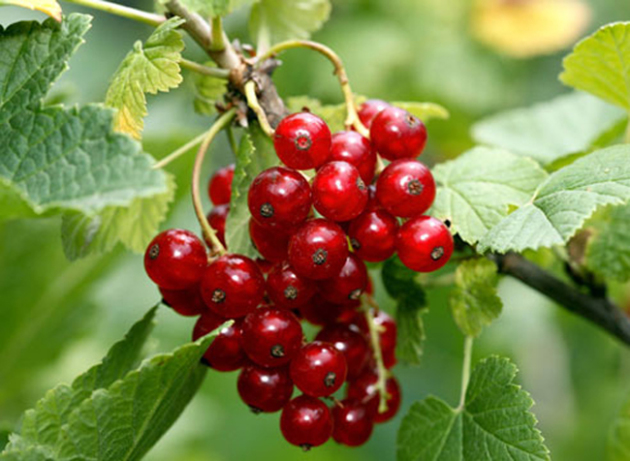
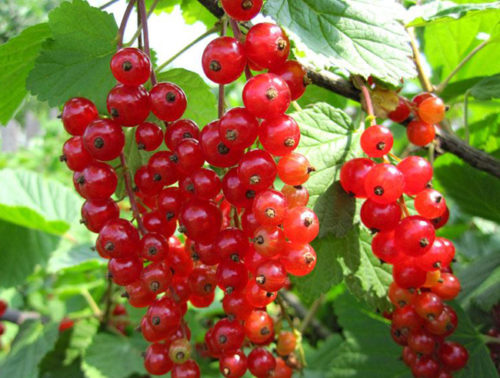
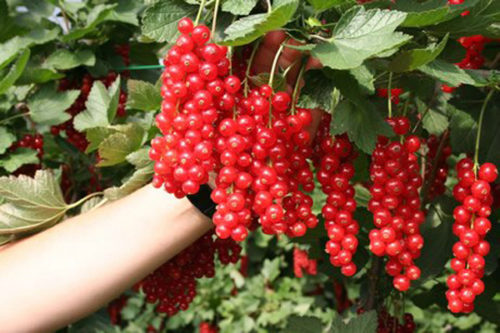
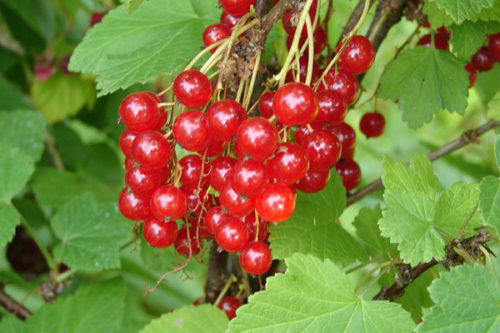
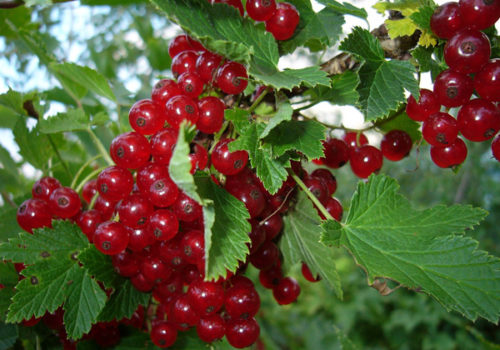
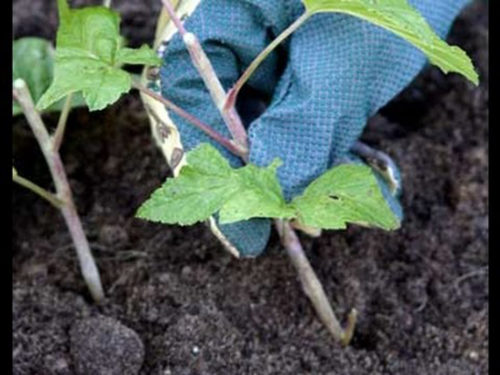
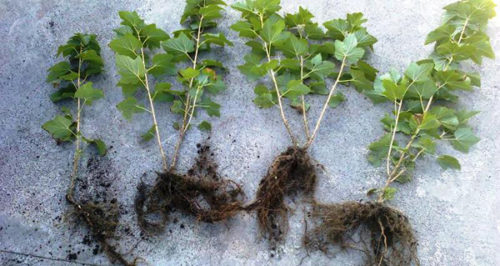

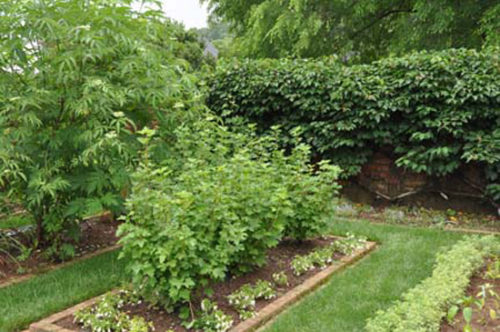
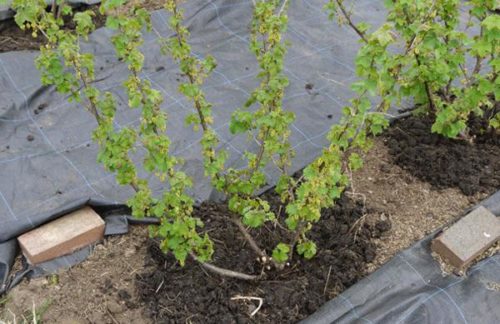
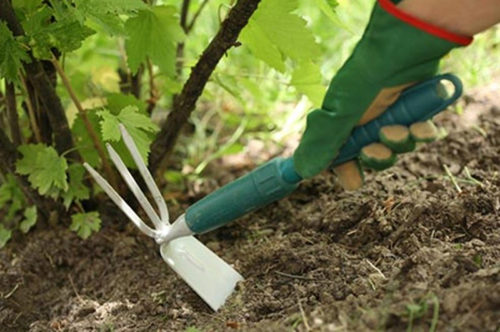
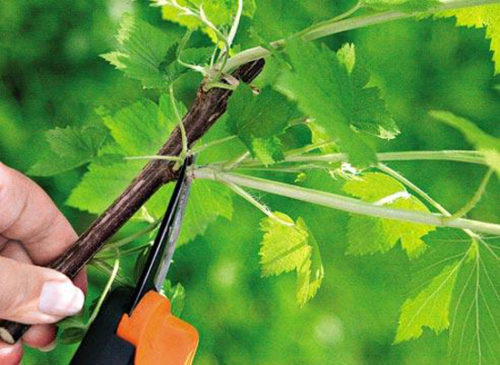

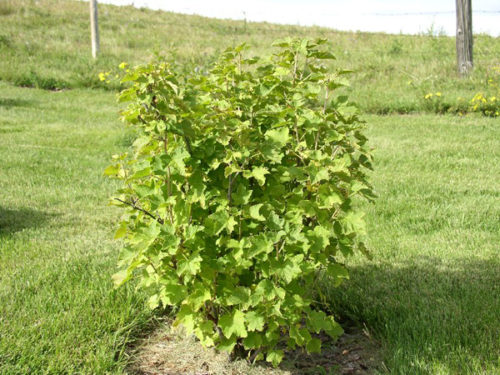
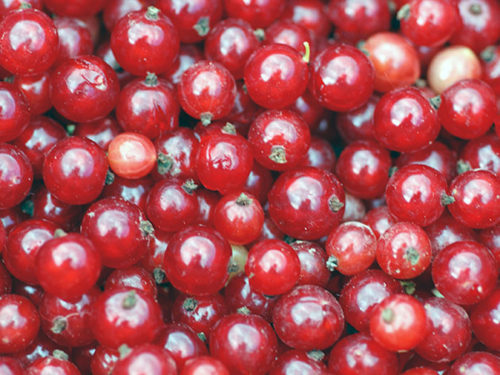
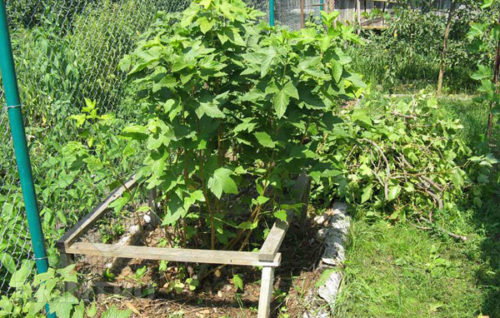
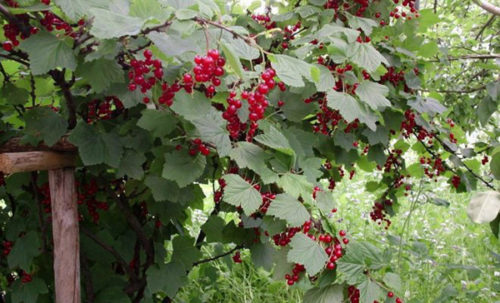
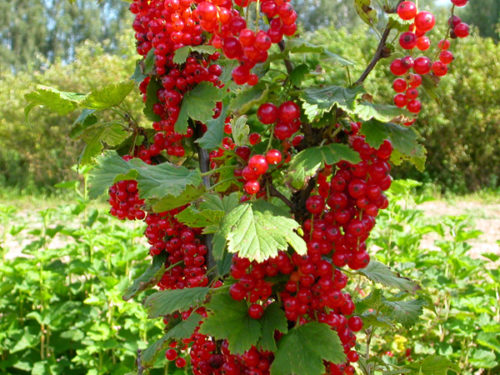













 Start a discussion ...
Start a discussion ...